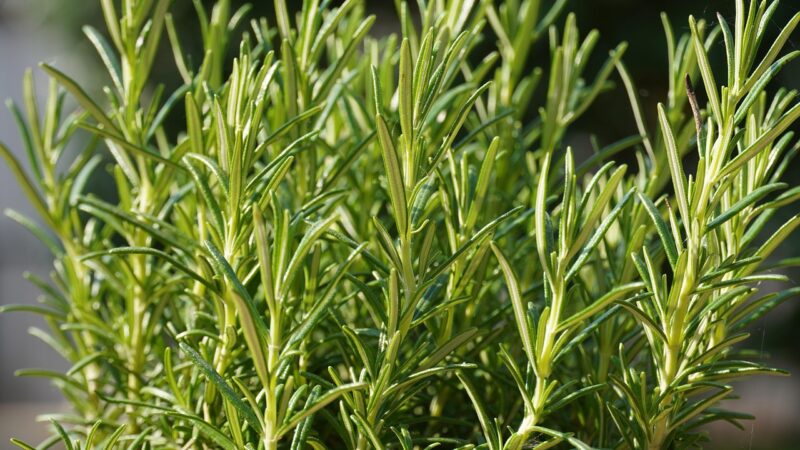The light requirements of rosemary

Sunlight is the single most vital ingredient for cultivating a healthy, vibrant, and aromatic rosemary plant. This herb’s very nature is forged by the intense, prolonged sun of its native Mediterranean coasts, and its need for bright light is non-negotiable for successful growth. The quantity and quality of light it receives directly impact its density, the production of essential oils responsible for its flavor and fragrance, and its overall resilience to pests and diseases. Understanding and providing for rosemary’s profound love of the sun is the foundational step upon which all other aspects of its care are built. Without adequate light, the plant will merely survive; with abundant light, it will truly thrive.
The essential role of full sun
Rosemary is unequivocally a full-sun plant, a classification that is central to its identity and care requirements. In horticultural terms, “full sun” is defined as an area that receives at least six to eight hours of direct, unfiltered sunlight per day. This substantial amount of light is necessary to fuel the process of photosynthesis, which the plant uses to convert light energy into the chemical energy it needs for growth. For rosemary, this energy production is not just about getting bigger; it’s also about developing the complex chemical compounds that constitute its essential oils, which are the source of its signature pungent aroma and robust flavor.
When rosemary is deprived of the full sun it craves, the consequences are readily apparent in its growth habit. The plant will exhibit signs of etiolation, a process where it stretches in an attempt to reach more light. This results in a leggy, sparse appearance, with long, weak stems and a greater distance between the sets of leaves. This type of growth is not only aesthetically unappealing but also structurally weak, making the plant more susceptible to breaking and unable to support its own weight. The foliage itself will often be a paler shade of green and will be noticeably less fragrant and flavorful.
The benefits of providing full sun extend beyond just vigorous growth and aromatic potency. Ample sunlight plays a crucial role in preventing many of the common fungal diseases that can afflict rosemary, such as powdery mildew. The intense light and the heat it generates help to keep the plant’s foliage dry, creating an environment that is inhospitable to the germination and spread of fungal spores. A plant grown in the shade, where the leaves remain damp for longer periods, is at a much higher risk of developing these types of problems.
Therefore, the selection of a planting site must be guided by the sun’s daily path across your garden. A location that is open and unshaded, particularly one with a southern or western exposure, is ideal. Before planting, it is a wise practice to observe the potential spot throughout an entire day to confirm that it does, in fact, receive the required six to eight hours of direct sun. This initial step is the most important investment you can make in the long-term health and productivity of your rosemary plant.
More articles on this topic
Indoor light considerations
Cultivating rosemary indoors presents a significant challenge primarily due to the difficulty of replicating the intense sunlight it requires. While it is possible to keep rosemary as a houseplant, especially during the winter months, careful attention must be paid to its light source. The absolute best location for an indoor rosemary plant is directly in front of a south-facing window. This orientation provides the most direct and prolonged sunlight exposure possible within a typical home, giving the plant its best chance of receiving the light it needs to stay healthy.
Even with a prime south-facing window, the light that passes through the glass is less intense than direct outdoor sunlight. During the shorter days of fall and winter, the duration of available light is also significantly reduced. In many cases, natural light alone may not be sufficient to keep the plant from becoming leggy and weak. You will need to monitor the plant’s growth closely. If you notice it stretching towards the window or its foliage becoming sparse, it is a clear indication that it is not receiving enough light.
To compensate for insufficient natural light, the use of supplemental artificial lighting is highly recommended, and often necessary, for maintaining a healthy indoor rosemary plant. A full-spectrum grow light is the most effective option, as it provides the specific wavelengths of light that plants need for photosynthesis. The light should be positioned just a few inches above the top of the plant and should be kept on for at least 10 to 12 hours per day to adequately supplement the natural light it receives.
Regularly rotating the pot is another important practice for indoor rosemary care. Plants will naturally grow towards their primary light source, which can result in lopsided or uneven growth. By giving the pot a quarter turn every week, you can ensure that all sides of the plant receive relatively equal exposure to the light. This simple action encourages a more balanced, symmetrical, and attractive growth habit, helping to keep your indoor rosemary looking its best throughout the season.
More articles on this topic
Adapting to different light conditions
While the ideal condition for rosemary is full, direct sun, it can demonstrate a limited degree of tolerance for slightly less light, although this will always come at a cost to its overall vigor. In extremely hot climates, such as arid desert regions, a location that provides rosemary with some light shade during the hottest part of the afternoon can actually be beneficial. This partial shade can help protect the plant from the stress of excessive heat and scorching sun, which can sometimes cause the foliage to fade or burn. However, it is crucial that the plant still receives at least six hours of direct sun during the morning and early part of the day.
In more temperate or northern climates, where the sun is less intense, providing the maximum possible sun exposure is always the goal. Any amount of shade in these regions will likely lead to suboptimal growth. If your garden lacks a location with six to eight hours of direct sun, you may find that rosemary struggles to thrive. In such situations, it is better to grow the plant in a container, which gives you the flexibility to move it around your patio or garden to “chase the sun” as its position changes throughout the day and across the seasons.
It is also important to consider the light conditions created by surrounding plants. A small rosemary plant can easily become shaded by taller, faster-growing neighbors in a crowded garden bed. When planning your garden layout, be mindful of the mature size of all your plants and ensure that the rosemary will not be overshadowed as the season progresses. Proper spacing not only guarantees continued access to sunlight but also improves the air circulation that is so critical for preventing fungal diseases.
Ultimately, rosemary is not a plant that is well-suited for shady garden spots. If your landscape is dominated by mature trees and lacks sunny areas, rosemary is probably not the right plant for your garden. Attempting to grow it in low-light conditions will almost invariably lead to a weak, disease-prone plant and a disappointing experience. Accepting the plant’s fundamental need for sun and choosing a location accordingly is the key to success.

















